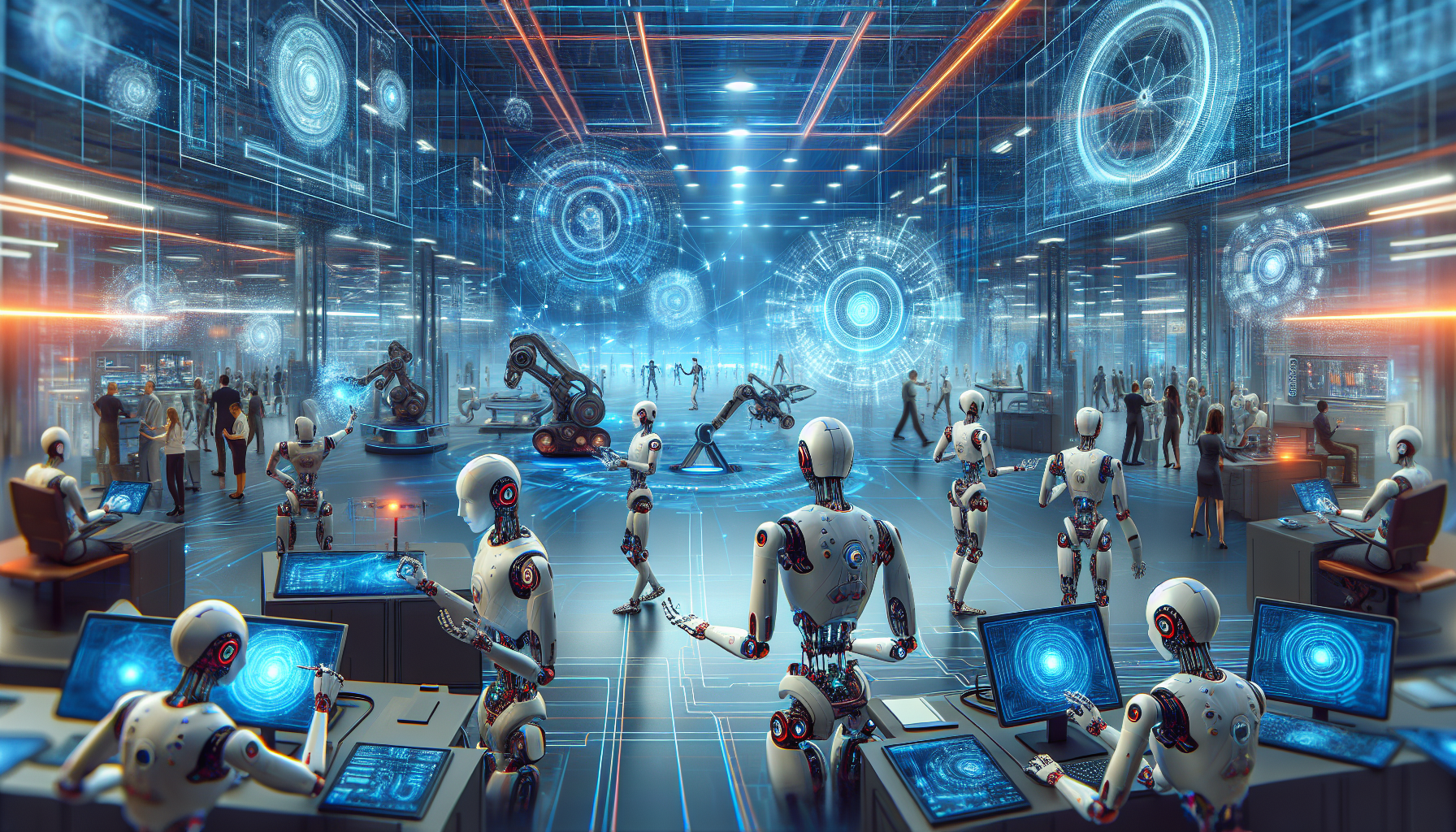Transforming Healthcare
Robotic Surgeries with Precision
In the medical field, AI-driven robots are revolutionizing surgeries. Take the da Vinci Surgical System, for example. This robotic surgical platform allows trained surgeons to perform minimally invasive surgeries with unparalleled precision and control. The system relies on advanced AI algorithms to assist in complex procedures, leading to shorter recovery times and reduced risk of complications. Surgeons can now operate with enhanced dexterity, often making incisions smaller than a dime.
AI in Diagnostics
Beyond surgeries, AI-driven robots are also making waves in diagnostics. Robots like PathAI and Zebra Medical Vision utilize machine learning to analyze medical images, identifying conditions ranging from cancers to fractures. These systems have demonstrated their accuracy, often matching or exceeding human capabilities. This innovation not only speeds up the diagnostic process but also helps healthcare professionals make informed decisions faster.
Robotic Companions for the Elderly
Innovation in AI-driven robots isn’t just restricted to hospitals; it’s also transforming elder care. Robots like ElliQ and PARO are designed as companions for the elderly, offering conversational interaction and reminders for medications or appointments. These robots use natural language processing to understand and respond to daily conversations, providing social interaction that can combat loneliness and enhance mental well-being in older adults.
Enhancing Manufacturing Efficiency
Collaborative Robots (Cobots)
In factories, collaboration between humans and robots is becoming increasingly common. These collaborative robots, or cobots, work alongside human workers to increase manufacturing efficiency. Companies like Universal Robots have developed lightweight, flexible robots that can be easily programmed to perform repetitive tasks. These bots not only improve productivity but also allow human workers to focus on more complex tasks that require critical thinking and creativity.
Quality Control with AI
Quality assurance is critical in manufacturing, and AI-driven robots are stepping up the game. Vision AI systems combine robotics and machine vision to ensure quality control. By using AI algorithms to analyze products on the assembly line, these systems can detect defects in real-time, reducing waste and ensuring high-quality output. This approach significantly minimizes reliance on human inspectors, who may overlook subtle defects.
Supply Chain Optimization
Logistics and supply chain operations are increasingly adopting AI-driven robots to streamline processes. Automated guided vehicles (AGVs) and drones are transforming warehousing, allowing for quick stock retrieval and delivery. They are equipped with AI algorithms that optimize routes, ensuring timely and efficient movement of goods. Companies like Amazon are capitalizing on this technology to enhance their distribution networks.
Revolutionizing Education
Personalized Learning Experiences
In classrooms, AI-driven robots are paving the way for personalized education. Robots like NAO and Pepper are being used as teaching assistants, capable of customizing lessons based on each student’s learning pace and style. They can engage students in interactive learning exercises and provide immediate feedback, making the educational experience more tailored and effective.
Language Learning with Conversational AI
Language learning can be daunting, but with AI-driven robots, it’s becoming more engaging. Robots equipped with conversational AI capabilities allow learners to practice their language skills in realistic scenarios. These robots can hold conversations, correct pronunciation, and even conduct quizzes. This interactive approach makes language acquisition less intimidating and more enjoyable.
STEM Learning through Robotics
Robotics kits like LEGO Mindstorms and VEX Robotics are encouraging students to delve into science, technology, engineering, and mathematics (STEM) education. With AI algorithms, these kits allow kids to program their robots, introducing them to coding and engineering principles in a hands-on manner. This approach not only fosters creativity but also prepares the younger generation for future careers in tech.
Innovations in Agricultural Robotics
Precision Farming
Agriculture is embracing AI-driven robotics in a significant way, leading to what is known as precision farming. Robots equipped with AI technologies can analyze soil health, weather patterns, and crop conditions. Solutions like the Ecorobotix use AI to ensure that pesticides and fertilizers are applied only where needed, minimizing chemical use and maximizing yield. This technology is crucial in making farming more sustainable and environmentally friendly.
Autonomous Harvesting
Leading the charge in agricultural innovation are autonomous harvesting robots. These bots utilize computer vision and machine learning to identify ripe crops and harvest them promptly. Companies like Harvest CROO Robotics have designed systems that can efficiently pick strawberries, drastically reducing labor costs while ensuring that the fruit is picked at the optimal time for quality.
Drones in Agriculture
Drones are another exciting innovation in agriculture. Equipped with AI and imaging technology, drones are being used for aerial surveys of crops, monitoring health and growth patterns from above. They can identify dry patches in fields, allowing farmers to target irrigation efforts precisely. This data-driven approach is transforming traditional farming methods and helping preserve resources.
Autonomous Vehicles and Delivery Robots
Self-Driving Technology
The automotive industry is currently experiencing a significant shake-up thanks to AI-driven autonomous vehicles. Companies like Waymo and Tesla are at the forefront, using sophisticated AI algorithms for navigation and obstacle recognition. These vehicles promise to enhance road safety and reduce traffic congestion while providing greater mobility for those unable to drive.
Last-Mile Delivery Solutions
As e-commerce continues to grow, so does the demand for efficient delivery solutions. Enter AI-driven delivery robots like Starship and Nuro, which are revolutionizing last-mile logistics. These small, autonomous robots navigate sidewalks and streets to deliver goods directly to consumers, ensuring fast delivery while reducing the carbon footprint typically associated with traditional delivery methods.
Robots for Outdoor Enhancements
As cities adapt to smarter living, outdoor robots are becoming increasingly popular for landscaping and maintenance. Robots like the Tertill weeding robot use AI to identify weeds and eliminate them without harming the intended plants. This technology frees up time for landscapers while also enhancing urban green spaces.
In summary, AI-driven robots are not just a glimpse into the future; they are actively reshaping our present across various industries, pushing the boundaries of what is possible. With advancements continuously emerging, it’s exciting to see where this journey will lead next.
